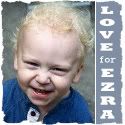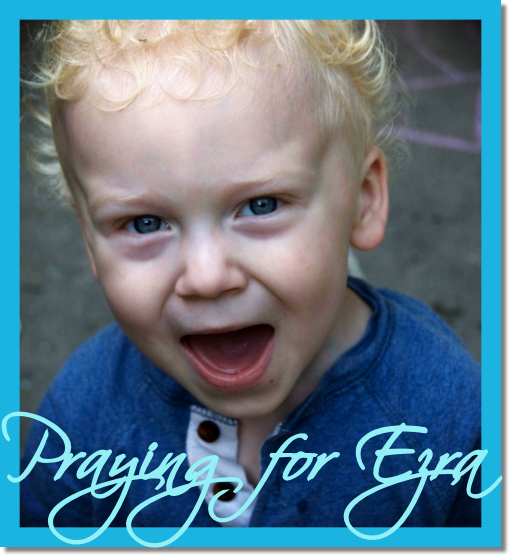What is Acute Lymphoblastic Leukemia (ALL) ?
“The term leukemia refers to cancers of the white blood cells, which are also referred to as leukocytes or WBCs. When a child has leukemia, large numbers of abnormal white blood cells are produced in the bone marrow. These abnormal white cells crowd the bone marrow and flood the bloodstream, but they cannot perform their proper role of protecting the body against disease because they are defective.
As leukemia progresses, the cancer interferes with the body's production of other types of blood cells, including red blood cells and platelets. This results in anemia (low numbers of red cells) and bleeding problems, in addition to the increased risk of infection caused by white cell abnormalities.
As a group, leukemias account for about 25% of all childhood cancers and affect about 2,200 American young people each year. Luckily, the chances for a cure are very good with leukemia. With treatment, most children with leukemia are free of the disease without it coming back.
Approximately 60% of children with leukemia have ALL, and about 38% have AML. Although slow-growing chronic myelogenous leukemia (CML) may also be seen in children, it is very rare, accounting for fewer than 50 cases of childhood leukemia each year in the United States.”
Causes
“The ALL form of the disease most commonly occurs in younger children ages 2 to 8, with a peak incidence at age 4. But it can affect all age groups.
Children have a 20% to 25% chance of developing ALL or AML if they have an identical twin who was diagnosed with the illness before age 6. In general, nonidentical twins and other siblings of children with leukemia have two to four times the average risk of developing this illness.
Children who have inherited certain genetic problems - such as Li-Fraumeni syndrome, Down syndrome, Kleinfelter syndrome, neurofibromatosis, ataxia telangectasia, or Fanconi's anemia - have a higher risk of developing leukemia, as do children who are receiving medical drugs to suppress their immune systems after organ transplants.
Children who have received prior radiation or chemotherapy for other types of cancer also have a higher risk for leukemia, usually within the first 8 years after treatment.
In most cases, neither parents nor children have control over the factors that trigger leukemia, although current studies are investigating the possibility that some environmental factors may predispose a child to develop the disease. Most leukemias arise from noninherited mutations (changes) in the genes of growing blood cells. Because these errors occur randomly and unpredictably, there is currently no effective way to prevent most types of leukemia.”
What Are the Symptoms of ALL?
“Because infection-fighting white blood cells are defective in children with leukemia, these children may experience increased episodes of fevers and infections.
They may also become anemic because leukemia affects the bone marrow's production of oxygen-carrying red blood cells. This makes them appear pale, and they may become abnormally tired and short of breath while playing.
Children with leukemia may also bruise and bleed very easily, experience frequent nosebleeds, or bleed for an unusually long time after even a minor cut because leukemia destroys the bone marrow's ability to produce clot-forming platelets.
Other symptoms of leukemia may include:
- pain in the bones or joints, sometimes causing a limp
- swollen lymph nodes (sometimes called swollen glands) in the neck, groin, or elsewhere
- an abnormally tired feeling
- poor appetite
In about 12% of children with AML and 6% of children with ALL, spread of leukemia to the brain causes headaches, seizures, balance problems, or abnormal vision. If ALL spreads to the lymph nodes inside the chest, the enlarged gland can crowd the trachea (windpipe) and important blood vessels, leading to breathing problems and interference with blood flow to and from the heart.”
Treatment
“Certain features of a child's leukemia, such as age and initial white blood cell count, are used in determining the intensity of treatment needed to achieve the best chance for cure. Although all children with ALL are treated with chemotherapy, the dosages and drug combinations may differ.
To decrease the chance that leukemia will invade the child's central nervous system, patients receive intrathecal chemotherapy, the administration of cancer-killing drugs into the cerebrospinal fluid around the brain and spinal cord. Radiation treatments, which use high-energy rays to shrink tumors and keep cancer cells from growing, may be used in addition to intrathecal chemotherapy for certain high-risk patients. Children then require continued close monitoring by a pediatric oncologist, a specialist in childhood cancer.
After treatment begins, the goal is remission of the leukemia (when there is no longer evidence of cancer cells in the body). Once remission has occurred, maintenance chemotherapy is usually used to keep the child in remission. Maintenance chemotherapy is given in cycles over a period of 2 to 3 years to keep the cancer from reoccurring. Leukemia will almost always relapse (reoccur) if this additional chemotherapy isn't given. Sometimes the cancer will return in spite of maintenance chemotherapy, and other forms of chemotherapy will then be necessary.
Sometimes a bone marrow transplant may be necessary in addition to - or instead of - chemotherapy, depending on the type of leukemia a child has. During a bone marrow transplant, healthy bone marrow is introduced into a child's body.
Intensive leukemia chemotherapy have certain side effects, including hair loss, nausea and vomiting in the short term, and potential health problems down the line. As your child is treated for leukemia, your child's cancer treatment team will monitor the child closely for those side effects.
But with the proper treatment, the outlook for kids who are diagnosed with leukemia is quite good. Some forms of childhood leukemia have a remission rate of up to 90%; all children then require regular maintenance chemotherapy and other treatment to continue to be cancer-free. Overall cure rates differ depending on the specific features of a child's disease. Most childhood leukemias have very high remission rates. And the majority of children can be cured - meaning that they are in permanent remission - of the disease.”
Information from Kids Health










No comments:
Post a Comment